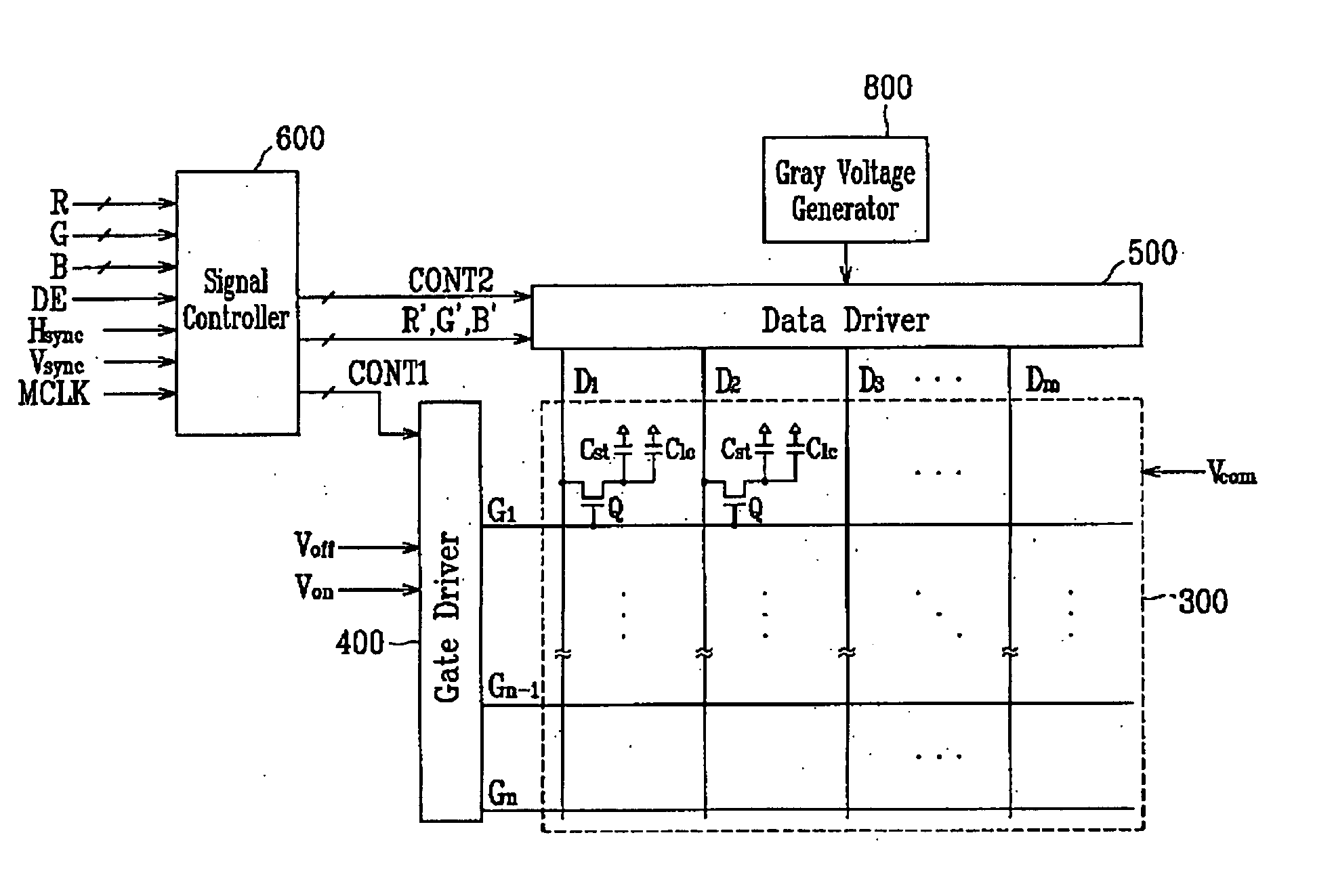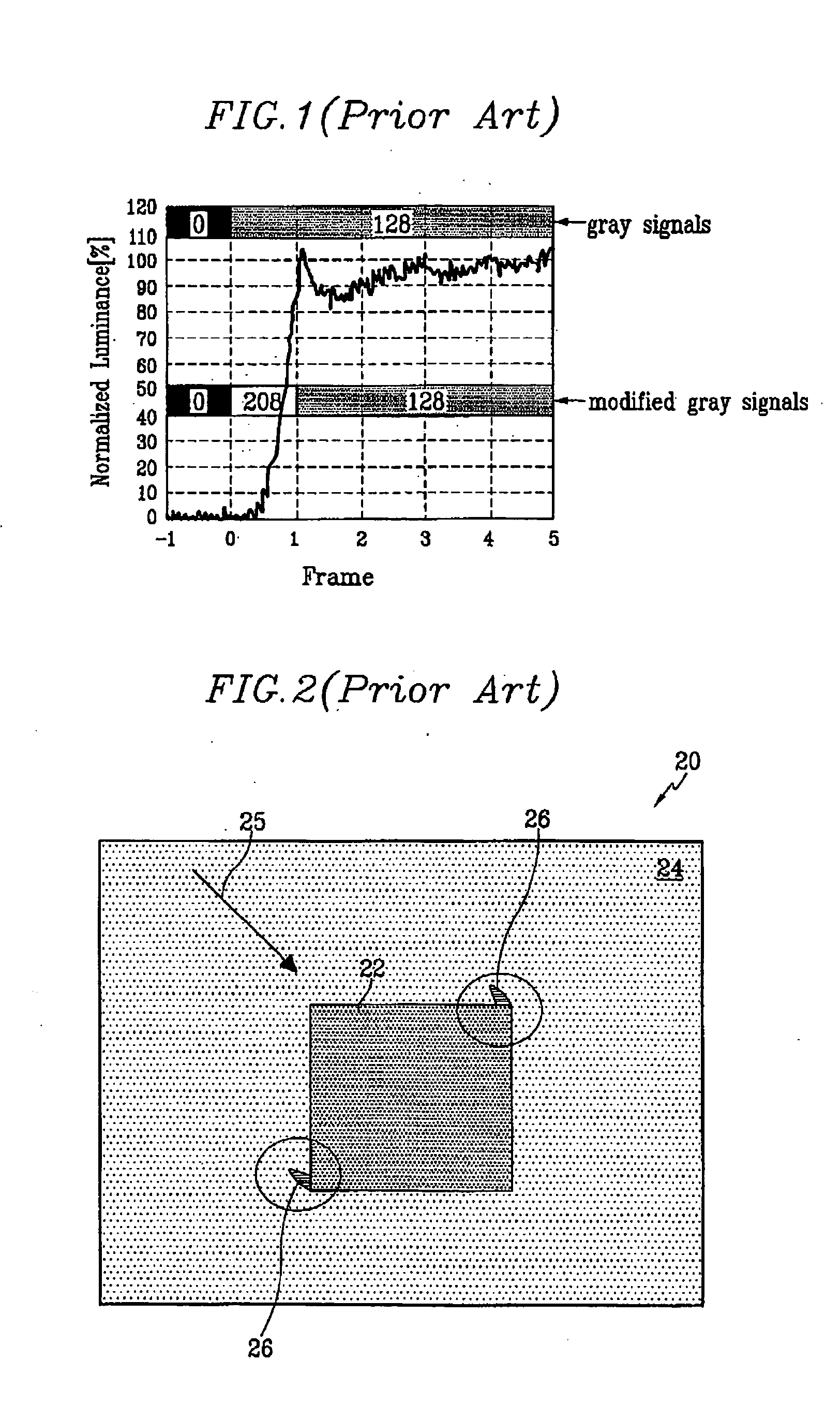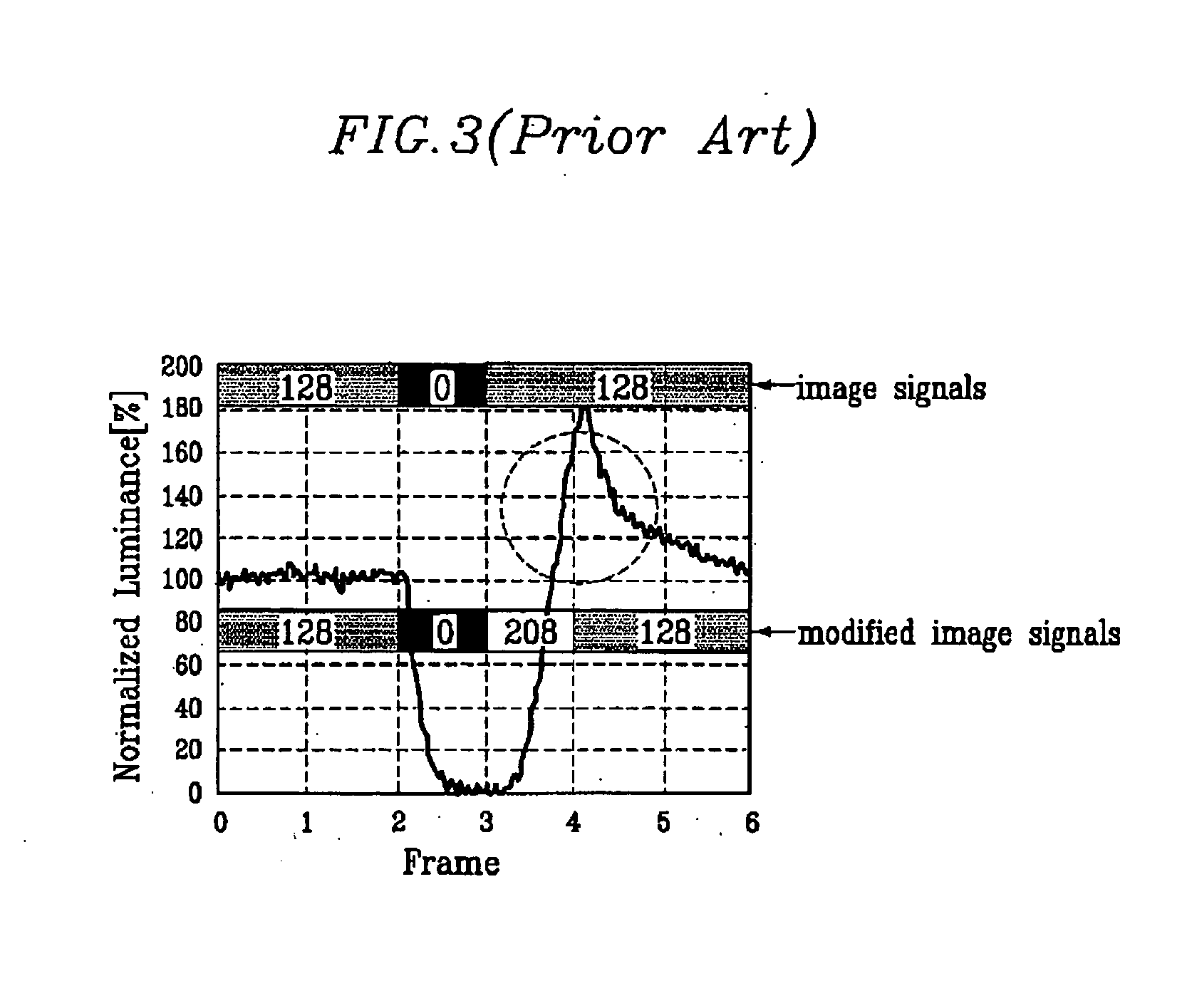Modifying gray voltage signals in a display device
a display device and gray voltage technology, applied in the field of display devices, can solve the problems of liquid crystal capacitors that may take a longer time than desired to reach the target voltage, liquid crystal capacitors that cannot respond quickly to the applied electric field, and special effects of flickering phenomenon
- Summary
- Abstract
- Description
- Claims
- Application Information
AI Technical Summary
Benefits of technology
Problems solved by technology
Method used
Image
Examples
example 1
A combination of three gray voltage levels is classified into the first class if the gray voltage level does not change much between the first frame and the second frame, but changes significantly between the second frame and the third frame. As used herein, the first frame is the previous frame, the second frame is the current frame, and the third frame is the next frame that will follow the current frame. A modification factor is determined according to the values of the current gray signal gn and the next gray signal gn+1, and applied to the current frame. More specifically, a modified current gray signal that is applied to the current frame is determined anticipating the large change in the gray voltage level that is about to take place. Effectively, a part of the upcoming change in the gray voltage is applied to the current frame in what is herein referred to as “pre-shooting.” In this case, the modified current gray signal is about equal to the preliminary modified signal g′1...
example 2
This example illustrates an embodiment of the invention where a combination of three gray voltage levels are placed into one of five possible classes.
A combination is placed into the first class if the difference between the previous gray signal gn−1 and the current gray signal gn is less than the first predetermined value (x and the next gray signal gn+1 is greater than the current gray signal gn.
In the second class, the previous gray signal gn−1 is larger than the sum of the current gray signal gn and the first predetermined value α, and the difference between the current gray signal gn and the next gray signal gn+1 is greater than the second predetermined value β.
In the third class, the previous gray signal gn−1 is greater than a sum of the current gray signal gn and the first predetermined value α, and the difference between the current gray signal gn and the next gray signal gn+1 is les than the second predetermined value β.
In the fourth class, the current gray signal ...
example 3
FIG. 7 is a block diagram of a first embodiment of the gray voltage modification module 650 for implementing the above-describe method. As shown in FIG. 7, the modification module 650 includes a signal receiver 61, a frame memory 62 coupled to the signal receiver 61, and a gray signal converter 64 that is coupled to both the signal receiver 61 and the frame memory 62.
The gray signal converter 64 includes a lookup table (LUT) 640, a calculator 643, and a signal comparator 644. The lookup table (LUT) 640 is coupled to the signal receiver 61 and the frame memory 62. More specifically, the input to the gray signal converter 64 is coupled to the lookup table 640, which receives input from the signal receiver 61 and the frame memory 62. The output of the gray signal converter 64 is coupled to a calculator 643.
The signal receiver 61 receives a raw input signal for the next frame (In+,) and converts it to a gray voltage signal that can be processed by the modification module 650. The si...
PUM
| Property | Measurement | Unit |
|---|---|---|
| current gray | aaaaa | aaaaa |
| current | aaaaa | aaaaa |
| voltages | aaaaa | aaaaa |
Abstract
Description
Claims
Application Information
 Login to View More
Login to View More - R&D
- Intellectual Property
- Life Sciences
- Materials
- Tech Scout
- Unparalleled Data Quality
- Higher Quality Content
- 60% Fewer Hallucinations
Browse by: Latest US Patents, China's latest patents, Technical Efficacy Thesaurus, Application Domain, Technology Topic, Popular Technical Reports.
© 2025 PatSnap. All rights reserved.Legal|Privacy policy|Modern Slavery Act Transparency Statement|Sitemap|About US| Contact US: help@patsnap.com



